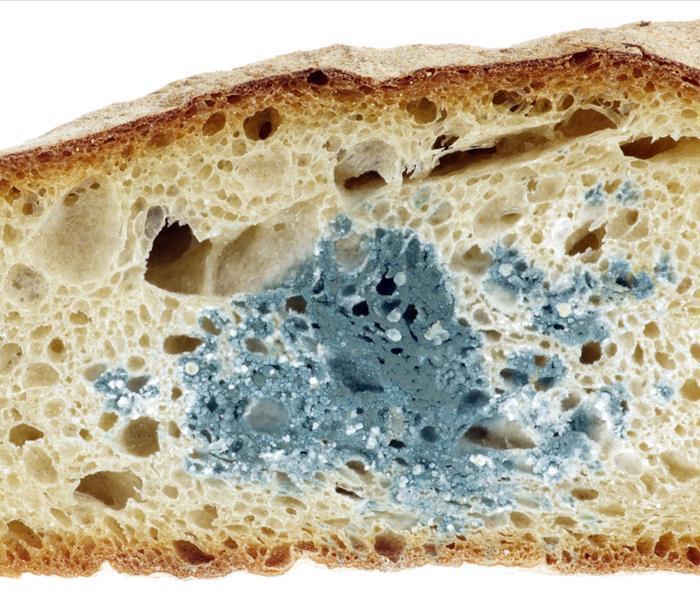Keeping Mold from Growing on Your Food
8/24/2016 (Permalink)
Buying small amounts and using food quickly is probably the best way to prevent mold growth in food. However, there are other practices that you can implement to prevent mold growth in food.
- Examine food well before you buy it. Check food in glass jars, look at the stem areas on fresh produce, and avoid bruised produce. Fresh meat and poultry are usually mold free, but cured and cooked eats might not be. Examine them carefully. The exception is that some salamis -- San Francisco, Italian, and Eastern European types -- have a characteristic thin, white mold coating that is safe to consume; however, they should not show any other mold. Dry-cured country hams normally have surface mold that must be scrubbed off before cooking.
- When serving food, keep it covered to prevent exposure to mold spores in the air. Use plastic wrap to cover foods you want to stay moist -- fresh or cut fruits and vegetables and green and mixed salads.
- Empty opened cans of perishable foods into clean storage containers and refrigerate them promptly. Make sure that the storage container is tightly covered.
- Use leftovers within 3 to 4 days so mold does not have a chance to grow.
Cleanliness is the key to controlling mold. Mold spores from contaminated food can build up in your refrigerator, dishcloths, and other cleaning utensils. To eliminate mold:
- Clean the inside of the refrigerator every few months with one tablespoon of baking soda dissolved in a quart of water. Rinse with clear water and dry. Scrub visible mold (usually black) on rubber casings using three teaspoons of bleach in a quart of water.
- Keep dishclothes towels, sponges, and mops clean and fresh. A musty smell means they are spreading mold around. Discard items you cannot clean or launder.
- Keep the humidity level in the house below 40%.
SOURCE:
U.S. Department of Agriculture. 2002. Molds on Food: Are They Dangerous. The complete publication is available on-line at:http://www.fsis.usda.gov/Fact_Sheets/Molds_On_Food/index.asp






 24/7 Emergency Service
24/7 Emergency Service
